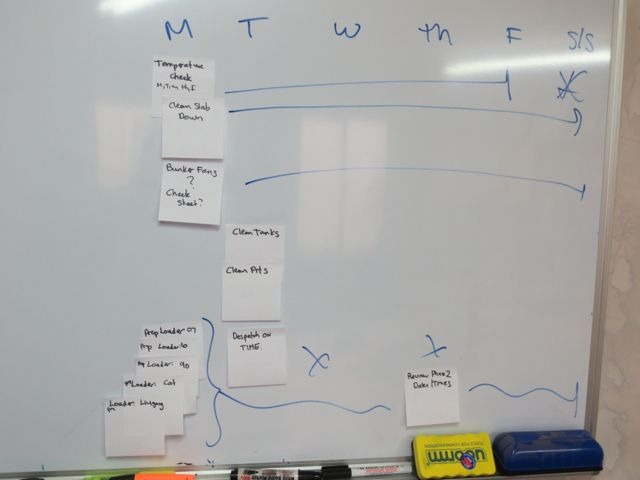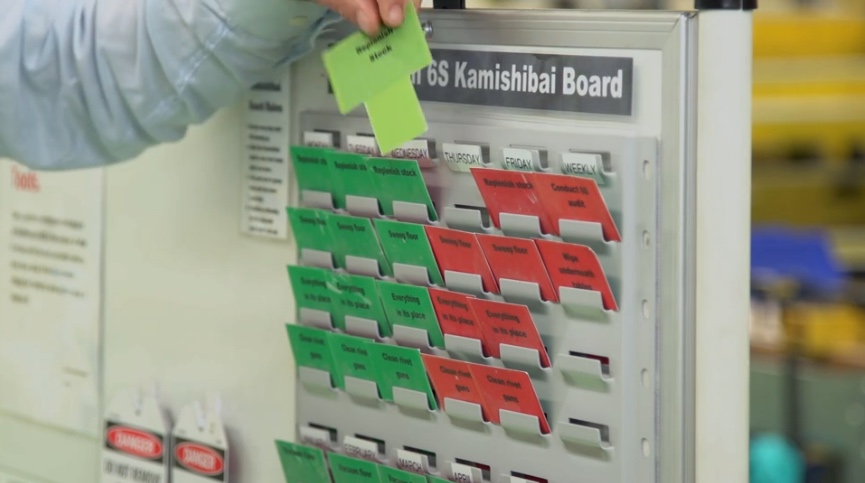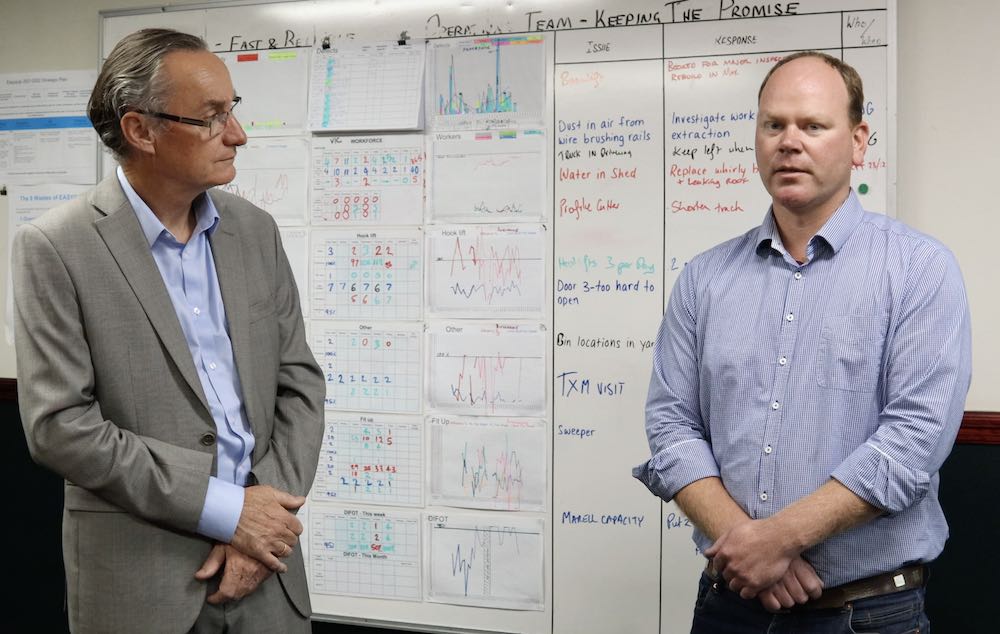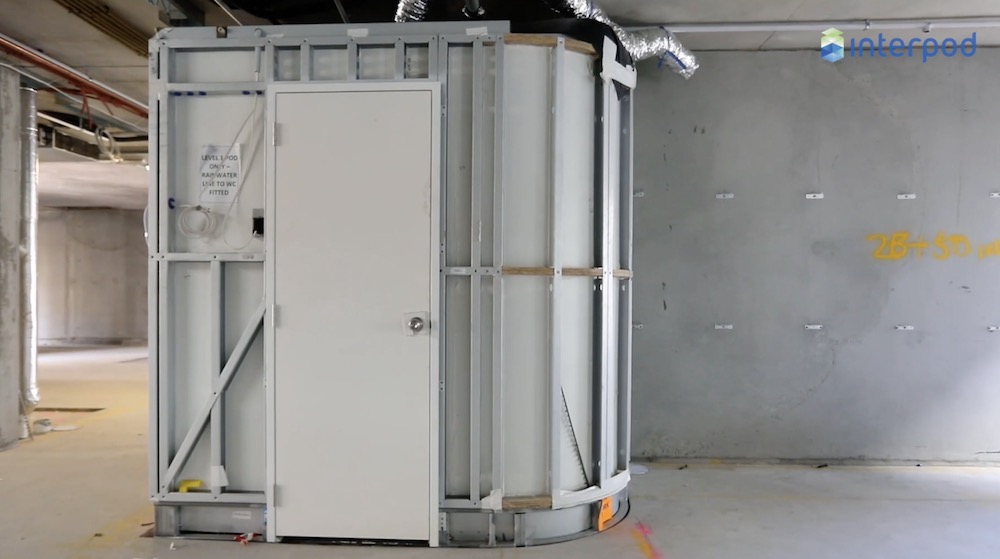We have previously talked about the benefits of using a Red-green task board (also known as a Kamishibai board or tee-card board) in our Lean Minute, as well as their use in Total Preventative Maintenance (TPM) and to sustain good housekeeping and 5S . Here we will look at how do we determine what tasks to add to the red-green task board.
Engaging your team
As with many of our Lean Management Tools, we want to use them with our teams to develop a common understanding about how our processes and systems work. Developing a red-green task board is another opportunity to gather your team together and focus on an improvement activity.
If you are developing a red-green task board as part of a 5S or TPM roll out, the best time to establish the board and its tasks are during the “Standardising” and “sustaining” phases – some progress has been made, even if it’s not complete, and it’s time to document some of the agreed practices so the team can use them to check on how they are maintaining their achievements of fay, and check on how they are going with the next steps.
To get things started, have a short brainstorming session with the team, noting all of the activities they need to do each week. Next identify if it needs to be done more than once a week, or even every day. For the tasks that need completing once a week, which day it needs doing on. Then look at balancing out the tasks, so they don’t all accumulate on a Friday.
Remember, the idea here is to have a visual management tool to help the team remember the key tasks the need completing each week. Finding the right balance of tasks across the week may take a few weeks to fine-tune.

Creating a Pilot
Creating a pilot or trial allows you to implement your red-green task board and monitor it for effectiveness and need over three to four weeks. You can review your red-green task progress as part of the Start-of-shift meeting. Some things to consider as the pilot progress’s are:
- are the tasks being completed each day?
- if not, why? Do we know how to do that task? Do we have the resources or capacity to complete the task in the allotted time?
- were we too ambitious with the initial tasks? Are there some tasks that don’t actually need to be done every day? Would twice a week be sufficient to maintain the required standard?
During the pilot of the red-green task board, remember that this, as with all of the Lean Enterprise tools, needs practice and time to fine-tune and refine. We learn more once the pilot is underway and as facilitators, we need the ability to step back and ask whether the current tasks highlighted are helping the team reach their daily and weekly goals. If they are, that’s great! If not, then make the call and make the change!

Review and Maintain your Red Green Task Board
Lean Enterprise processes need reviewing over time. That’s so we can check the information is still current and challenging the team. The red-green task board also needs to be included in the regular reviews and audits that you have in place. As your team matures through their Lean journey, the tasks may evolve as well, and the task board will need updating.
Now that we have stepped through the process for establishing your Red Green Task board, we hope you are ready to create your own. Of course, if you need any help, just give your friendly TXM Lean Consultant a call. With offices in Melbourne, Sydney, Brisbane, Perth, China and now in Connecticut, one of us isn’t far away!





